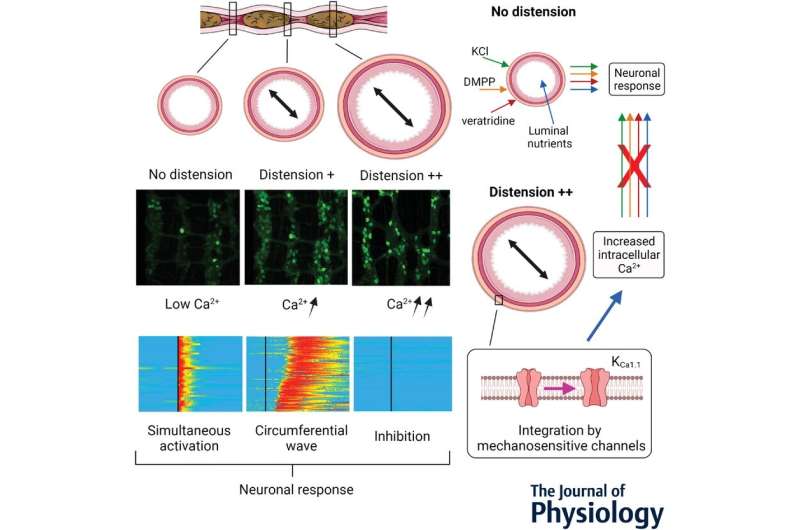This article has been reviewed according to Science X's editorial process and policies. Editors have highlighted the following attributes while ensuring the content's credibility:
fact-checked
peer-reviewed publication
trusted source
proofread
A new imaging technique for a clearer picture of the 'brain in the gut'

University of Calgary researchers designed a novel imaging and experimental preparation system, allowing them to record the activity of the enteric nervous system in mice. The new technique allows researchers to record what is sometimes referred to as the gut's brain during the complex processes of digestion and waste elimination.
"This completely different way of conducting experiments allows us to better understand the complexity of the nerve interactions that are regulating and coordinating the responses by the gut's nervous system," says Dr. Wallace MacNaughton, Ph.D., co-principal investigator. "It opens up new avenues for us to understand what's really going on, and that's going to help us understand gastrointestinal diseases and disorders a lot better."
Neurons, or nerve cells, embedded in the wall of the gut precisely control its movements. The team used mice genetically encoded with fluorescent labels, so the neurons in the gut's nervous system would "light up," glowing green under microscopes, whenever the neurons were activated. The images are already providing new insights.
"This wave of excitation around the circumference of the gut, and the change in neuronal excitability, have never been seen before," says Dr. Keith Sharkey, Ph.D., co-principal investigator. "When the gut is distended, the nerve circuits respond in ways that are totally different than when the gut is relaxed."
The team's study is the first that shows, in an intact gut preparation, the role of the gut's physical distention in controlling how the entire neural network in the gut is coordinated. The findings published in the Journal of Physiology include instructions on how to replicate the technique which Sharkey describes as marrying technology with biology.
"We wanted all researchers to have access to this approach," says Sharkey. "Gaining a better understanding of the physiology of the gut is fundamental to being able to understand what happens when it doesn't work properly, and to developing effective treatments."
The populations of neurons, the neural architecture, and the way the gut is arranged is virtually identical in the mouse gut and the human gut. This makes it highly likely that similar processes occur in the human gut, the researchers say.
Gastrointestinal (GI) disorders, such as irritable bowel syndrome and Crohn's disease, impact 10 to 20 percent of North America's population and cost billions of dollars in health care. Yet because GI disorders are poorly understood, current treatments work for only a fraction of patients, may lose their effectiveness over time, or cause serious side effects.
Sharkey and MacNaughton now plan to investigate how probiotics, inflammation and bacterial infection alter the control and coordination of the gut's nervous system in mice.
"This is giving us a model that may help us test new approaches to treating gastrointestinal diseases in people at some point in the future," MacNaughton says.
More information: Jean‐Baptiste Cavin et al, Intestinal distension orchestrates neuronal activity in the enteric nervous system of adult mice, The Journal of Physiology (2023). DOI: 10.1113/JP284171




















